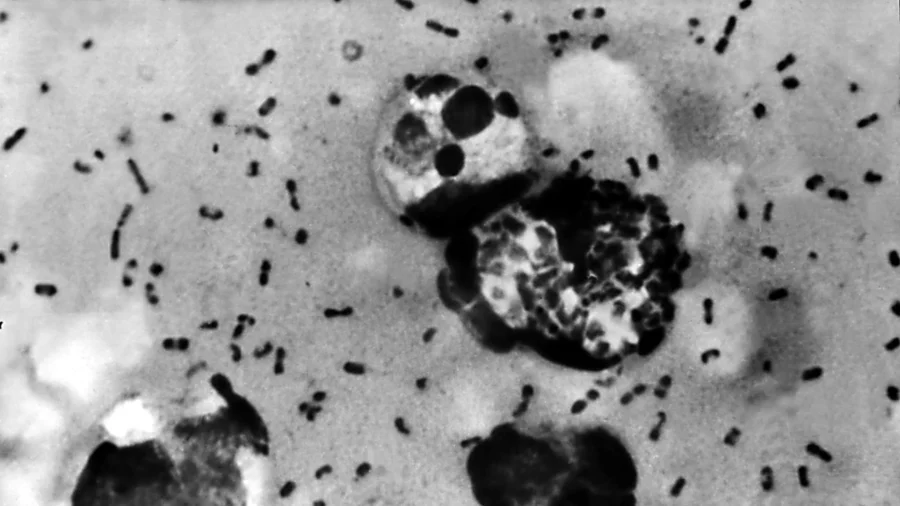Oregon health officials have confirmed a rare case of human plague in a resident who was likely infected by their symptomatic house cat.
In a statement issued on Feb. 7, Deschutes County Health Services said it was the state’s first human case of bubonic plague—known as the Black Death in the Middle Ages—since 2015.
Dr. Richard Fawcett, the Deschutes County health officer, said all those who’d been in close contact with the infected person were given medication to prevent any potential infections from developing into symptoms.
“All close contacts of the resident and their pet have been contacted and provided medication to prevent illness,” Dr. Fawcett said, without identifying the infected individual.
Officials said the case poses little risk to the community since it was identified and treated in the earlier stages, noting no additional cases of plague have emerged during the communicable disease investigation.
The agency wrote in the statement that symptoms of bubonic plague usually begin in humans “two to eight days after exposure to an infected animal or flea.”
The plague spreads to humans or animals through a bite from an infected flea or by contact with an animal sick with the disease, the agency added. The most common animals to carry the plague in Oregon are squirrels and chipmunks, but mice and other rodents can also carry the disease.
According to the U.S. Centers for Disease Control and Prevention (CDC), bubonic plague symptoms include a high fever, headache, nausea, chills, weakness, as well as pain and swelling of lymph nodes.
“The bacteria multiply in the lymph node closest to where the bacteria entered the human body. If the patient is not treated with the appropriate antibiotics, the bacteria can spread to other parts of the body,” officials said.
If not diagnosed early, the disease can progress into more severe versions called septicemic plague (bloodstream infection) and/or pneumonic plague (lung infection)—which is the most serious form of the disease that can be transmitted among humans by airborne droplets of saliva or sputum containing infectious organisms.
“Pneumonic plague may develop from inhaling infectious droplets or may develop from untreated bubonic or septicemic plague after the bacteria spread to the lungs,” officials said, noting that pneumonia in patients may cause respiratory failure and shock.
In the 14th century, the plague was blamed for the deaths of tens of millions in Europe. The Plague of Justinian, caused by the bubonic plague bacteria Yersinia pestis, is believed to have killed upwards of 100 million people throughout the Byzantine Empire and elsewhere in the 6th century.
Previous Cases
The last reported case of bubonic plague in the Beaver State was in 2015, when a 16-year-old girl from Crook County contracted the disease, according to Oregon health officials.
Authorities at the time said the teenager was believed to have been infected by a flea bite during a hunting trip in Morrow County, leading her to fall ill and recover in an intensive care unit at a hospital in Bend, central Oregon.
“Many people think of the plague as a disease of the past, but it’s still very much present in our environment, particularly among wildlife,” said Dr. Emilio DeBess, a veterinarian in the state’s Public Health Division.
“Fortunately, plague remains a rare disease, but people need to take appropriate precautions with wildlife and their pets to keep it that way,” he added.
According to the CDC, the plague was introduced to the United States in 1900 by rat-infested steamships that had sailed from affected areas, mostly in Asia. The last urban plague epidemic in the United States occurred in Los Angeles, California, from 1924 through 1925.
It is unclear how many cases of the plague there were across the United States in 2023, but the CDC said that there were less than 10 human plague cases in the United States in 2020, with two deaths.
To prevent the spread of plague, Deschutes County Health Services recommend several tips, including avoiding contact with rodents and fleas, discouraging pet cats from hunting rodents, not feeding squirrels, chipmunks, or other wild rodents, as well as avoiding camping near animal burrows or areas where dead rodents are observed.
Officials also said that wearing long pants tucked into boot tops and wearing insect repellent on socks and trouser cuffs reduces exposure to fleas, thus lowering chances of contracting the very rare disease even further.


